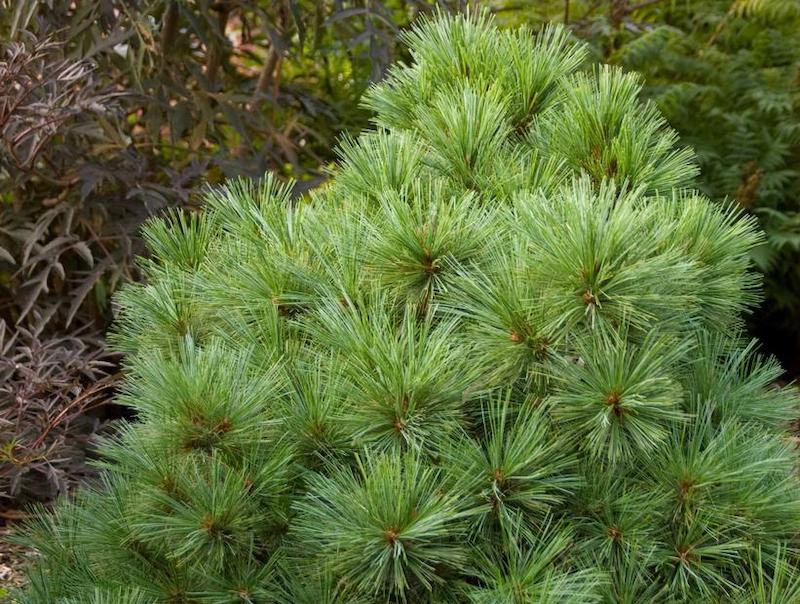Pine trees, Pinus sp., are well known for their tall, pyramidal appearance. These evergreen trees will happily grow with little to no maintenance. However, there are several benefits to pruning pine trees. Look at pine trees growing in a nursery or Christmas tree farm, for example. Did you ever notice that they look fuller and more compact than pine trees growing in the wild? This tidy appearance is often maintained by yearly pruning. When done properly, pruning allows better manipulation of the pine tree’s growth and health.

When to Prune Pine Trees
The best time of the year to prune pine trees is in spring. In contrast to other conifers, pine trees have a distinct candling phase of growth each spring. The new growth tips, called candles, are located at the end of branches. These terminal buds undergo a period of elongation before unfurling into the current year’s needles. Pine trees should be pruned during the candling phase because it controls the current year’s growth without jeopardizing the growth potential for next year. In other words, once the candles are pruned, no additional growth will occur until next spring, making it an effective way to maintain compact growth.
Pruning late in the growing season may not provide enough time for wounds to heal, which makes the tree more susceptible to winter damage. It can also attract pests looking for a spot to overwinter. However, pine trees can be pruned anytime a dead or damaged branch appears. Always prune out damaged branches as soon as possible to maintain the health of the tree and the safety of the tree’s surroundings.

Why Prune Pine Trees
Fresh shoots, or candles, can be pinched back to achieve neater, compact growth in pine trees. Young, newly planted trees also benefit from pruning to maintain a shorter height. This allows greater control of pine tree growth, shape, and appearance, which is especially important in smaller spaces. Additionally, pine trees should be pruned whenever there are signs of pest or disease damage. Prune out any branches that are affected to stop the spread of the pest and encourage healthier growth. Dead branches and branches damaged by wind should also be pruned out, as these branches are at risk of falling and hurting people, animals, and property.
How to Prune Pine Trees
Step 1 - Locate the candles
Candles are the new growth of pine trees in spring. They can be identified as soft, thin, light-green or tan-colored whorls of needles unfurling at the end of branches. Candles are ready to prune when their needles are about half as long as the mature needles.
Step 2 - Prune the candles to maintain tidy, dense growth
Using pruners or a knife, snip off about half of the length of the candle. More or less can be trimmed off depending on the desired branch length; the less length of candle you prune, the longer the branches will be.
Step 3 - Prune out any damaged, dead, or diseased branches
Assess the tree for any signs of pests, diseases, or dieback and remove any branches that show damage. To prevent stripping of the bark and promote healthy healing, use the following method of pruning for larger branches: Using a hand saw, make a cut part-way into the bottom side of the branch. Make a second cut a few inches to the right of the first cut, this time cutting all the way through to remove the bulk of the branch. Finish up by cutting the remainder of the branch on the other side of the first cut, being sure to leave a stub that is several inches from the trunk.
Pine Tree Pruning Tips
- Pine trees should be pruned in spring
- Prune candles to achieve denser, lush growth
- Regularly remove any dead, damaged, or diseased branches
 |
Lauren Youngcourt - Published 03-23-2023 |
